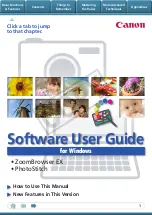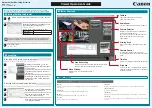
Understanding System Redundancy
ExtremeWare XOS 11.1 Concepts Guide
51
The TFTP session defaults to port 69. If you do not specify a virtual router, VR-Mgmt is used.
For example, to connect to a remote TFTP server with an IP address of 10.123.45.67 and “get” or retrieve
an ExtremeWare XOS configuration file named XOS1.cfg from that host, use the following command:
tftp 10.123.45.67 -g -r XOS1.cfg
When you “get” the file via TFTP, the switch saves the file to the primary MSM. If the switch detects a
backup MSM in the running state, the file is replicated to the backup MSM.
To view the files you retrieved, enter the
ls
command at the command prompt.
Understanding System Redundancy
If you install two MSMs in the chassis, one assumes the role of master (primary) and the other assumes
the role of backup. The master MSM provides all of the switch management functions including
bringing up and programming the I/O modules, running the bridging and routing protocols, and
configuring the switch. The master MSM also synchronizes the backup MSM in case it needs to take
over the management functions if the master MSM fails.
Node Election
Node election is based on leader election between the MSMs installed in the chassis. The MSM installed
in slot A has master status. The Device Manager collects the node health information and forwards that
information to the Node Manager. The Node Manager then computes the quality of the node which is
later used in leader election.
When two nodes exchange their health information, they determine the healthier node. Based on the
election results obtained from all of the nodes, the healthiest node wins the election criteria.
At the end of the election process, a master is selected. The master MSM runs the switch management
functions, and the backup MSM is available if the master fails.
Determining the Master Node
The master node is determined by the following parameters:
●
Node state—The node state must be STANDBY to participate in leader election and be selected
master. If the node is in the INIT, DOWN, or FAIL states, it cannot participate in leader election. For
more information about the node states, see
“Viewing Node Status” on page 54
.
●
Configuration priority—This is a user assigned priority. The configured priority is compared only
after the node meets the minimum thresholds in each category for it to be healthy. Required
processes and devices must not fail.
●
Software health—This represents the percent of processes available.
●
Health of secondary hardware components—This represents the health of the switch components,
such as power supplies, fans, and so forth.
●
Slot ID—The MSM slot where the node is installed (MSM-A or MSM-B).
Содержание ExtremeWare XOS 11.1
Страница 16: ...Contents ExtremeWare XOS 11 1 Concepts Guide 16...
Страница 20: ...Preface ExtremeWare XOS 11 1 Concepts Guide 20...
Страница 21: ...1 Using ExtremeWare XOS...
Страница 22: ......
Страница 78: ...Managing the ExtremeWare XOS Software ExtremeWare XOS 11 1 Concepts Guide 78...
Страница 168: ...Virtual LANs ExtremeWare XOS 11 1 Concepts Guide 168...
Страница 200: ...Policies and ACLs ExtremeWare XOS 11 1 Concepts Guide 200...
Страница 252: ...Security ExtremeWare XOS 11 1 Concepts Guide 252...
Страница 265: ...2 Using Switching and Routing Protocols...
Страница 266: ......
Страница 294: ...Ethernet Automatic Protection Switching ExtremeWare XOS 11 1 Concepts Guide 294...
Страница 354: ...Extreme Standby Router Protocol ExtremeWare XOS 11 1 Concepts Guide 354...
Страница 416: ...IP Multicast Routing ExtremeWare XOS 11 1 Concepts Guide 416...
Страница 417: ...3 Appendixes...
Страница 418: ......
Страница 432: ...Software Upgrade and Boot Options ExtremeWare XOS 11 1 Concepts Guide 432...
















































